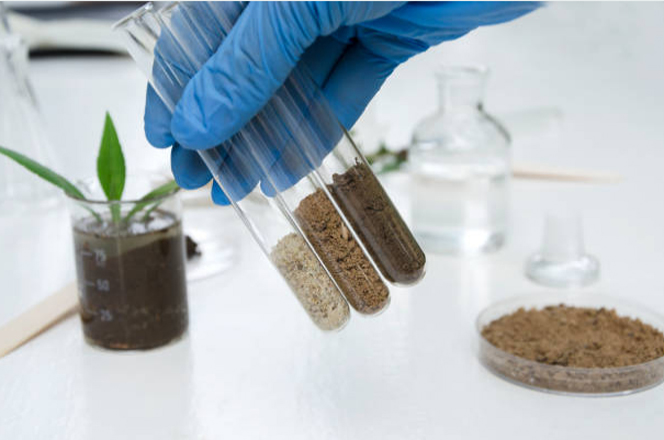Multi enzyme and dsDNA testing for soil
Unique tests to measure
soil fertility

Soil fertility tests are carried out to measure the minimum amount of organic matter required for healthy soil. Our unmatched microbial biomass and enzyme tests involve regularly measuring organic matter in soil, and identifying changes over time. The analysis consists of using microorganisms in the soil, and their action as analysis sensors enable increases or losses of organic matter to be monitored for an affordable price.
Unique, innovative tests
INNOVATION
Innovation is the distinctive characteristic due to having optimised a sample preparation procedure based on heteromolecular exchange which, combined with a thorough sample crushing system, is extremely fast, efficient and cost-effective, as additional purification steps are not required before analysing actual amounts.
The method was developed using a particularly complex and difficult matrix i.e. soil, and has also been used successfully in archaeology. When applied to other biological and environmental matrices, it has delivered the same benefits demonstrated with soil, and it is also to be tested in the field of diagnostics.
Tests
for measuring organic matter
Enzyme tests
Our test to analyse soil fertility by measuring the amount of organic matter was devised after the discovery that enzymes can be extracted from soil via molecular desorption. This enables the biochemical activity of soil to be assessed in a tangible, quick and cost-effective manner.

Did you know?
Did you know that if you analyse soil fertility through the intensity of biogeochemical processes for nitrogen, phosphorous and sulphur, you can understand how nutritional resources are used to improve soil fertility?Microbial biomass tests
The soil fertility test is based on the amount of double strand DNA (dsDNA) in the soil. It is highly sensitive and has been used in dozens of scientific publications. More than 30,000 samples from all over the world have been analysed so far using this method, thanks to its high level of sensitivity and reliability. The test is not costly and is cheaper than other methods available.

Did you know?
That the soil fertility test based on an increase or decrease of microbial mass indicates a variation in organic matter, even when chemical analysis is unable to show this? And that it is now possible to quantify microbial biomass?
Benefits
Access to technology which is one of a kind,
to obtain essential information on the health of your soil
Direct involvement
in collecting soil samples to send to our laboratory
Low-cost
thanks to an innovative technological test process

